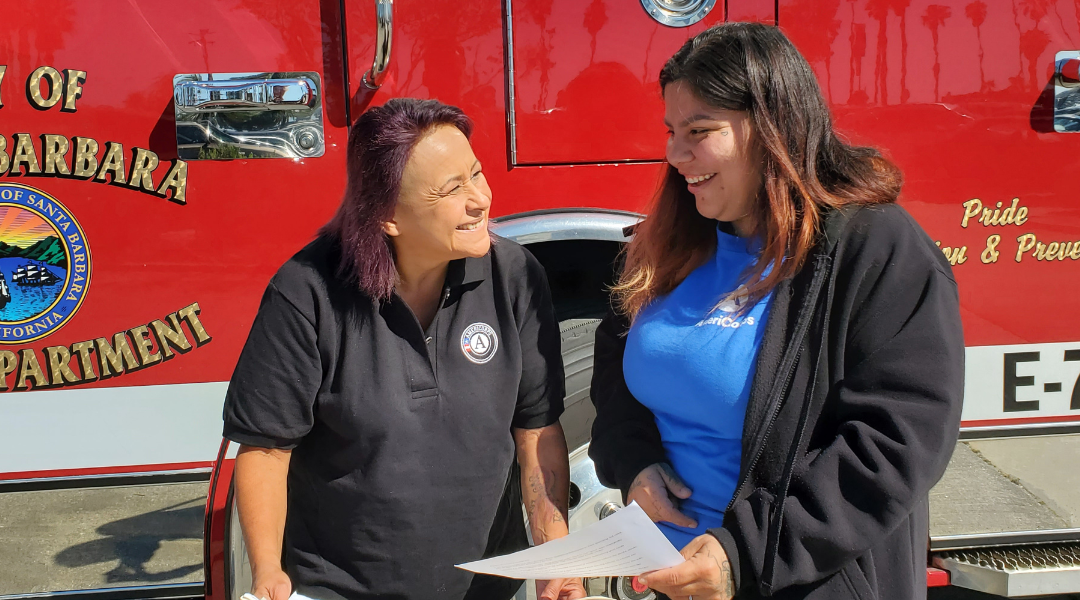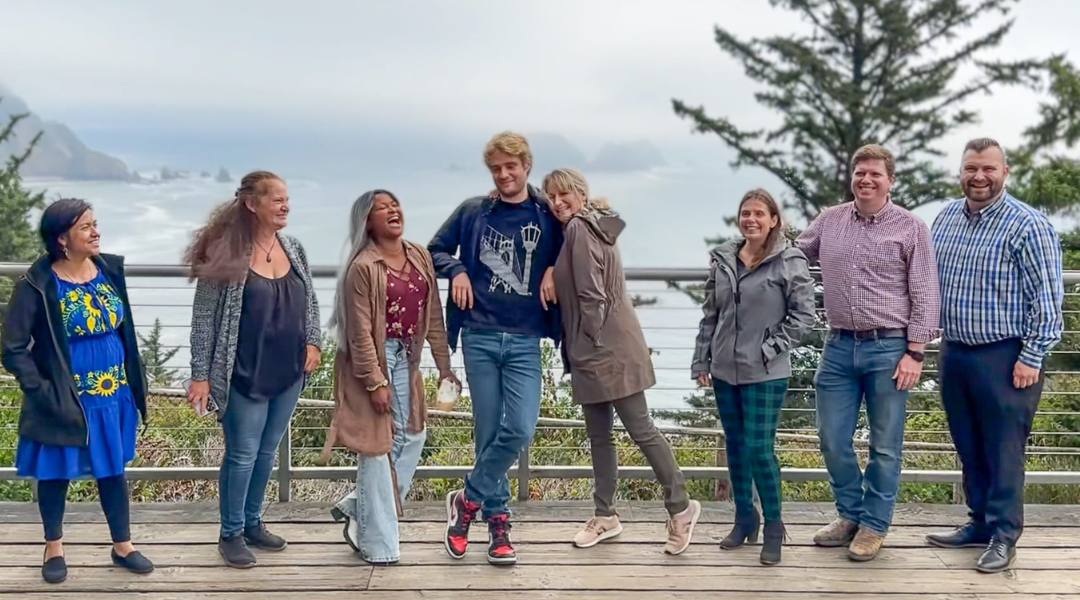
Photo caption: Parent and grandparent members of YWCA Kalamazoo’s Parent Advisory Committee gather with youth from the YWCA Children’s Center for a tie-dye event.
What is your program called, and how does it work?
Local Initiatives Support Corporation (LISC) works to strengthen neighborhoods by providing financing, technical assistance, and capacity building support to our partners. As a vital part of LISC’s capacity-building strategy, we place passionate, dedicated people with community development organizations to help spearhead valuable projects and engage residents in revitalizing their own neighborhoods.
Working with our partner organizations, LISC AmeriCorps members have done everything from financial counseling and job placement to housing development and foreclosure prevention. Along the way, they engage local residents in volunteering to improve the safety, health, and beauty of their neighborhoods. Many members serve the very communities where they live. This is one way to grow the pool of leaders who reflect the demographics of the neighborhoods served and equip those emerging leaders with the skills to effect long-term community change.
For example, we recently placed a LISC AmeriCorps member at the YWCA in Kalamazoo, MI — a public health organization that specializes in services for survivors of domestic violence and operates early learning childcare centers — and that individual created and managed the YWCA Parent Advisory Committee (pictured above).
Why did you want to be part of Generations Serving Together, bringing cogeneration into national service?
I’ve always been interested in diversity. Coming from a multigenerational family, where my siblings are 20-plus years older than me, I have seen how generations working together can be powerful. I’ve also seen how technology has created a generational divide and I care about bridging those gaps so people can work more collaboratively together. I wanted to be part of the Generations Serving Together cohort because I was excited to have an opportunity to learn from others across the country who are committed to cogenerational service.
What problem is your program trying to solve? We are trying to increase age diversity across our AmeriCorps network and reduce generational bias in recruiting practices within our organization. AmeriCorps recruitment has been a challenge all across the country, and the Covid-19 pandemic brought added stress to the local recruitment pipeline with many nonprofits that leverage AmeriCorps members still recovering. As a new generation enters the workforce, now is the perfect time to identify best practices and create new resources for our staff to better support our nonprofit partners in age-diverse recruitment efforts.
What’s the value of a cogenerational approach?
There are many values to a cogenerational approach, like increasing the talent pipeline, and promoting different perspectives, but it can also drive innovation. If organizations encourage intergenerational collaboration, people are empowered to create initiatives that combine past knowledge with new ideas, which leads to innovation.
What’s your big audacious vision? If you succeed, what change will we see?
We are currently developing LISC’s Recruitment Playbook, which provides tools to build culture, identify anchor institutions, uncover and remove age and other types of bias from recruitment and selection, assess member skills, and support members to achieve high impact and completion rates. Our audacious vision is that 1) LISC staff in local offices across the country utilize the Recruitment Playbook on a regular basis and find value in its content, and 2) LISC staff outside of the LISC AmeriCorps program, including human resources, use the playbook as a guide for LISC’s work in general and place more intentionality around equitable recruitment in all aspects of our work.
How can people get involved with your work?
They can learn more about LISC and what we do by visiting lisc.org. I think the best way for people to get involved with cogenerational work is to keep talking about it. Repetition is key to changing a narrative and creating lasting impact. If we want cogenerational programs to be successful, then we must create environments that support age diversity and all of the nuances that come with that.
Coffee or tea?
There’s nothing like a warm cup of tea. So soothing and refreshing and so many varieties. Earl Gray and lemon-ginger are my favorites.





